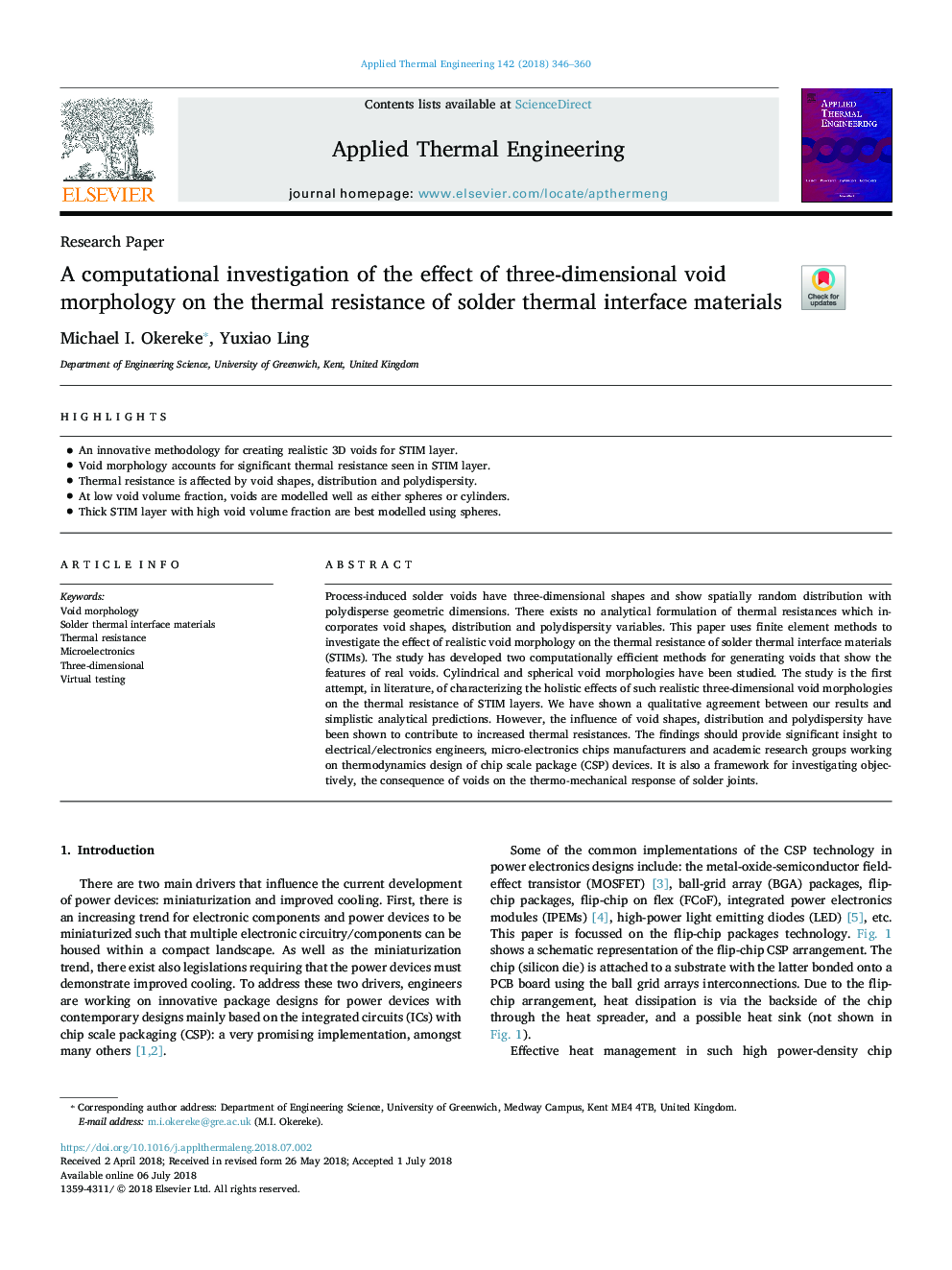| کد مقاله | کد نشریه | سال انتشار | مقاله انگلیسی | نسخه تمام متن |
|---|---|---|---|---|
| 7044800 | 1457087 | 2018 | 15 صفحه PDF | دانلود رایگان |
عنوان انگلیسی مقاله ISI
A computational investigation of the effect of three-dimensional void morphology on the thermal resistance of solder thermal interface materials
ترجمه فارسی عنوان
یک بررسی محاسباتی بر اثر مورفولوژی ورقه سه بعدی بر مقاومت حرارتی مواد واسط های حرارتی لحیم کاری
دانلود مقاله + سفارش ترجمه
دانلود مقاله ISI انگلیسی
رایگان برای ایرانیان
کلمات کلیدی
موضوعات مرتبط
مهندسی و علوم پایه
مهندسی شیمی
جریان سیال و فرایندهای انتقال
چکیده انگلیسی
Process-induced solder voids have three-dimensional shapes and show spatially random distribution with polydisperse geometric dimensions. There exists no analytical formulation of thermal resistances which incorporates void shapes, distribution and polydispersity variables. This paper uses finite element methods to investigate the effect of realistic void morphology on the thermal resistance of solder thermal interface materials (STIMs). The study has developed two computationally efficient methods for generating voids that show the features of real voids. Cylindrical and spherical void morphologies have been studied. The study is the first attempt, in literature, of characterizing the holistic effects of such realistic three-dimensional void morphologies on the thermal resistance of STIM layers. We have shown a qualitative agreement between our results and simplistic analytical predictions. However, the influence of void shapes, distribution and polydispersity have been shown to contribute to increased thermal resistances. The findings should provide significant insight to electrical/electronics engineers, micro-electronics chips manufacturers and academic research groups working on thermodynamics design of chip scale package (CSP) devices. It is also a framework for investigating objectively, the consequence of voids on the thermo-mechanical response of solder joints.
ناشر
Database: Elsevier - ScienceDirect (ساینس دایرکت)
Journal: Applied Thermal Engineering - Volume 142, September 2018, Pages 346-360
Journal: Applied Thermal Engineering - Volume 142, September 2018, Pages 346-360
نویسندگان
Michael I. Okereke, Yuxiao Ling,
